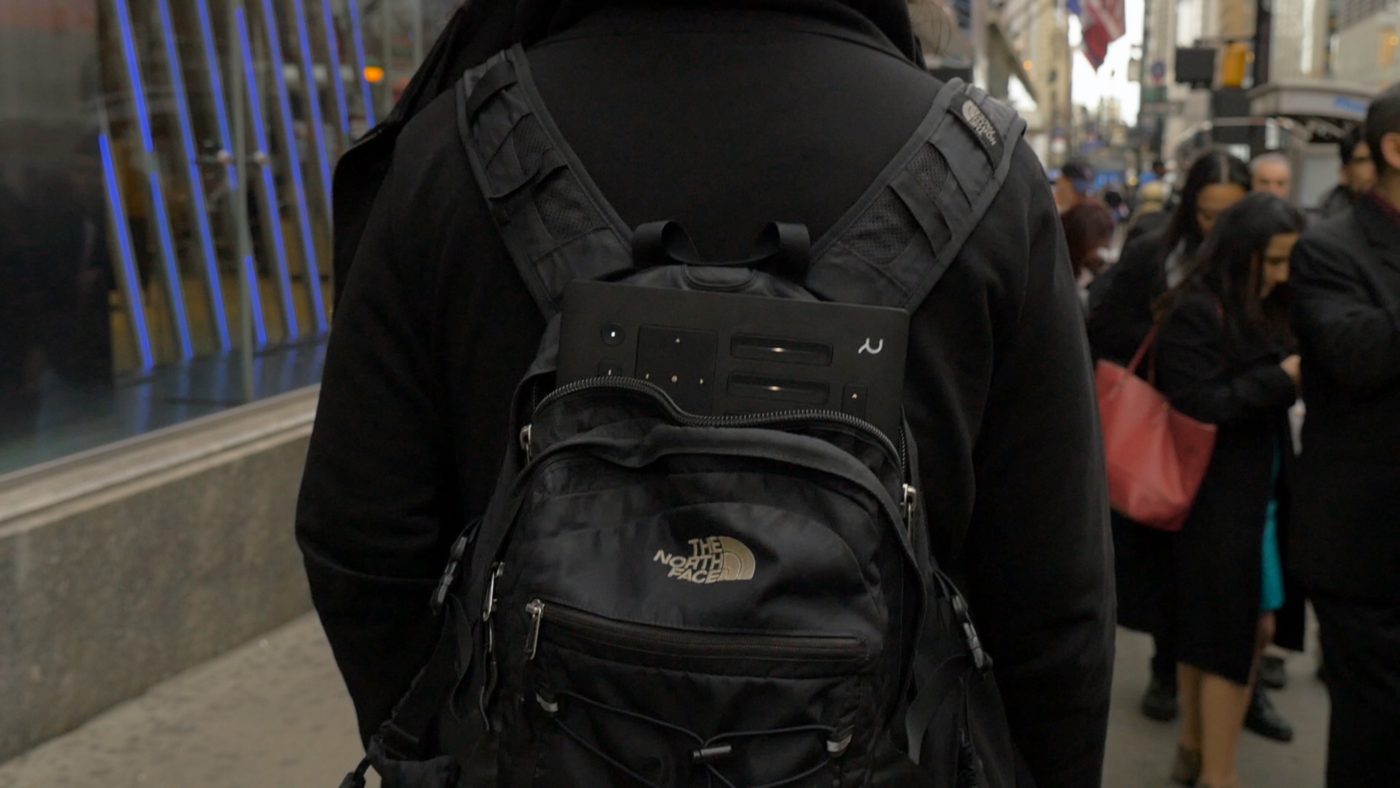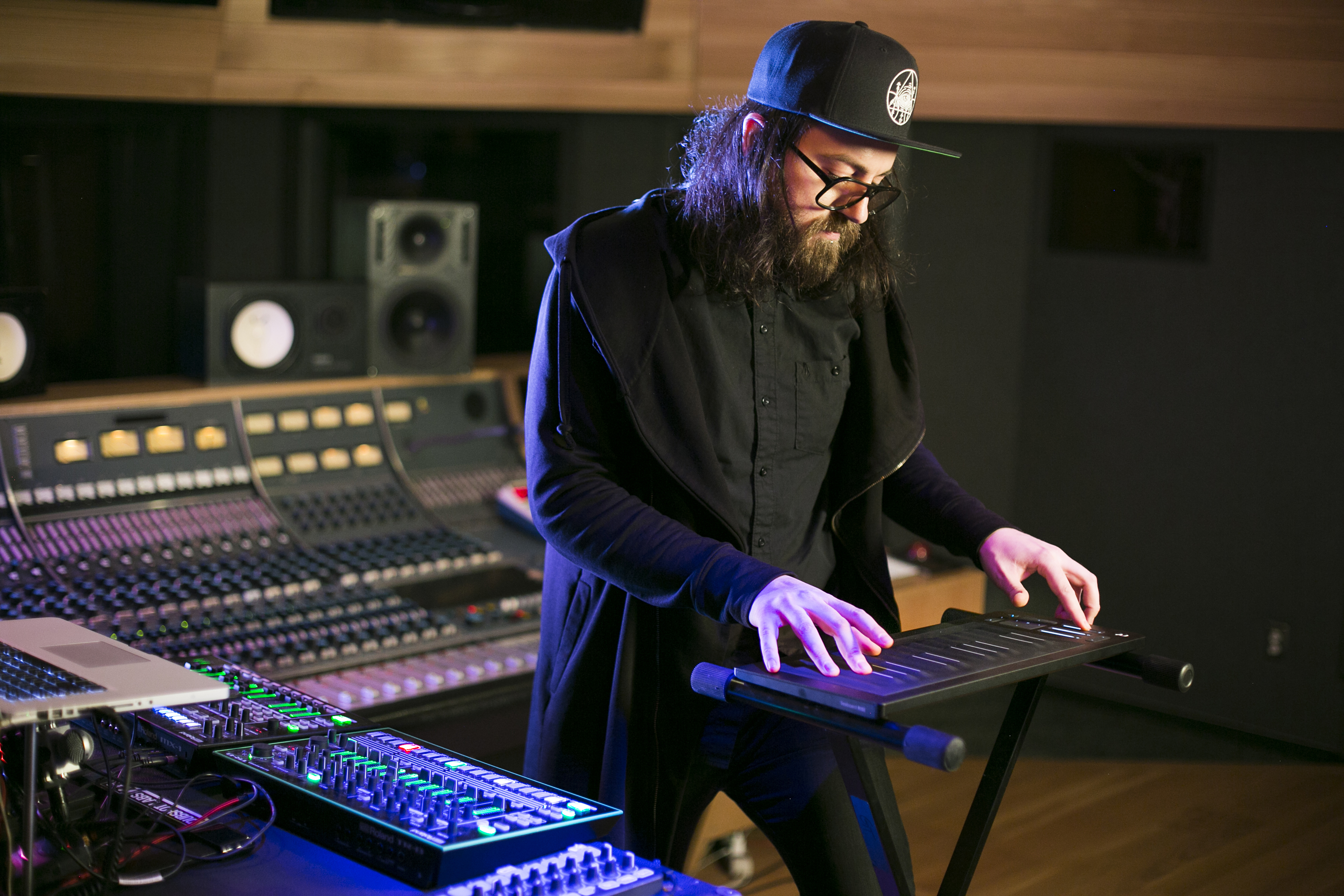On the RISE: Creating new sounds with Adriano Clemente
Brooklyn-based sound designer and DJ
“The city itself is full of sounds and noises, all these things I wanted to capture, and I started to collect them,” says Adriano Clemente, the Brooklyn-based sound designer and DJ who now makes music with the Seaboard RISE 25. “Like when you walk through Union Square at 9pm on a June evening there’s a saxophone playing somewhere, and there are voices. But there’s more: underground vibrations, taxis braking, a fire engine.”
Obsessed with sounds, Adriano spent his first months in New York wandering around the city with a directional microphone — driven by the same goal as a documentary photographer. Sometimes he injects the sounds of the city into his music. The subway rumbles under his studio in Brooklyn, and he buried this almost imperceptibly deep bass at the bottom of WIP, an ambient track from 2016.
Adriano regularly performs genre-bending sets of techno, ambient, punk rock, IDM, and ‘80s synthwave music at venues across Brooklyn. But he says he is a sound designer first and foremost. His approach to music is elemental, focusing on sounds as moods and textures that he pieces together into something larger.
“I see sounds as if they’re geometric objects,” he says. “They’re a mix between shape and color. They’re round and smooth, harsh and abrasive, bright and dark. Sometimes I use sounds captured from the real world, and sometimes they’re completely artificial made with synths. I love mixing up organic elements and synthetic elements. Working with sound is sort of like cooking: even with a few basic ingredients, the complex things you can create are almost infinite.”

"I see sounds as if they’re geometric objects. They’re a mix between shape and color. They’re round and smooth, harsh and abrasive, bright and dark. Sometimes I use sounds captured from the real world, and sometimes they’re completely artificial made with synths."
When his sounds form a track, he does not care how it is classified: ambient techno? But he cares deeply about the technology that got him there. New gear — like a high-resolution directional microphone — means new ways to create and shape sound.
“I don’t want to stick with the old thing if there is something new that does it better,” he says. “I never stick with one instrument or one piece of software or one setup. I don’t stick with one musical genre. Once I feel I know something, I get curious about something else. I can’t stop it.”
As an instructor in sound design at Dubspot, the electronic music academy, Adriano brings new music technology into the classroom. Some of his interests are bleeding-edge experimental. He supports an Indiegogo-funded project to record inaudible electromagnetic frequencies like the sound emitted by an iPhone, because such frequencies are an undiscovered continent for sound sampling.
“I have to take an adventurous view toward technology because of everything I’ve seen so far,” says Adriano, who is 33. “In terms of new formats for music, look at what’s happened: we’ve gone from vinyl to cassettes to minidiscs to CDs to MP3s to the cloud to — I don’t know what’s next. When the cassette disappeared, I didn’t have a chance to be nostalgic. These changes are normal. This is the process of technology evolving. I see all the time the necessity for something new, whether people want it or not, and that has really influenced the way I make music.”

Adriano played the Seaboard RISE in New York the first month it became available.
“I tried it during a performance at Cielo. I put my headphones on and closed my eyes and just connected with the instrument. When I see a totally new instrument or a new technology, what I like to do is spend time listening to it and letting it speak to me. I struck a chord, and suddenly I realized that these micro-movements on the surface were triggering all these changes in pitch and timbre. I thought, ‘It’s not usually like that! You usually put your finger on a key, and it’s safe. The pitch is stable.’ Not with the Seaboard! It was a little overwhelming.”
Adriano uses his RISE to push the boundaries of sound design. It has been instrumental to the sound of his new EP, which he will release under the Blend label this summer.
“What the RISE has done is really make me focus on expression when I input notes,” he says. “When I strike a sound on the RISE, it’s like I can see a composition unfolding in slow motion. I’ll grab a chord or a single note and focus on its expression by doing slow movements up and down the key along the Y axis, which lets me open and close filters. Then I combine that with movements along the horizontal axis, which bends pitch. Even when you’re just striking one key with one finger, you’re basically controlling three things at once. You’re producing a sound, modulating it, and also bending pitch. Usually you would need pitch-bend wheels and faders and other things to do all this at once. Here I’m doing it on one key.”
“The RISE is a really good prototyping tool for me to make new sounds,” he says. “And it’s more fun — it’s almost like being in the future — because I know these sounds are only possible on the RISE. I’ve started to build up a collection of sounds that are RISE sounds. They need Slide, Glide, and Press if I’m going to have one note sing or change the note from bright to dark, from a round shape to an edgy shape, without lifting the finger from the key.”

“I tried it during a performance at Cielo. I put my headphones on and closed my eyes and just connected with the instrument. When I see a totally new instrument or a new technology, what I like to do is spend time listening to it and letting it speak to me.”
Six years after arriving in New York from Rome, Adriano still spends a lot of time walking through the city, looking and listening. “What usually inspires my music is really what surrounds me. I live in New York City. If you look closely you can see inspiration, pain, struggle, happiness.”
On the subway he sketches music on apps like KORG Gadget and Nanoloop. He bases the sketches on the people in the subway car, the moods they give off, and the ambient noises of the space. “I started trying to connect with these people on the subway not by engaging in conversation but by imagining,” he says. “I see something, and then I continue the story through music. And when I go back to the studio these things are still running in my head. It’s the source that’s going to drive the creation.”
One day at his home studio he noticed that the deep-bass rumble of the L train, which had unsettled him when he first moved to New York, was actually soothing. “The vibration was so constant,” he says. “It was like my bassline had become tuned to that sound.” So he recorded it, then distorted and adapted it on the cutting-edge tools he keeps close. And the sound entered his music as an unnoticeable tribute to Brooklyn.
Adriano Clemente’s new EP releases on the Blend label this summer. Follow Adriano on his website or on Facebook.
Join the ROLI community